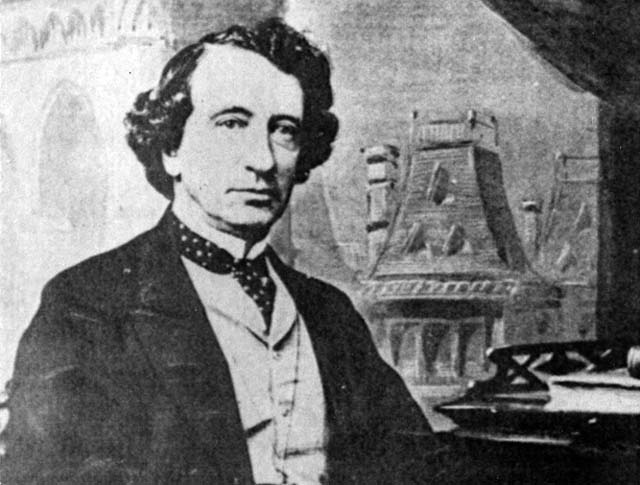|
Sir John A. Mcdonald - Date unknown Anonymous Photographer.
27 April 2015
By Championing the CPR
Macdonald Secured Canada's Future
Toronto Ontario - If there had never been a Canadian Pacific Railway (CPR) stretching from sea to sea, there would not have been a
Canada like we know today.
And without Sir John A. Macdonald's single-minded determination to complete the massively expensive and impractical project after Confederation, there would
not have been a CPR.
"Macdonald's single greatest achievement as a nation-builder, aside from Confederation itself, was the completion of the transcontinental railway,"
says Richard Gwyn, author of the two-part Macdonald biography, John A, and Nation Maker.
"In doing so, he connected British Columbia to the rest of Canada, preventing that province from quitting Confederation and joining the
U.S."
Building the CPR also provided a way for immigrants to settle the Canadian West.
This was a matter of some urgency, the United States was running out of its own free land and Americans were moving onto the Canadian Prairies.
American settlers were prone to take over sparsely populated lands legally claimed by other countries, as they had the Mexican state of Texas, and the British
section of the Oregon territory (now Washington state) by holding popular referendums to bind these lands to the U.S.
"Without the railway, Canada would likely have suffered the same fate," says Gwyn.
The colossal task of surveying the CPR's route, clearing the land, cutting tunnels, and laying thousands of miles of track, impresses even today.
"In terms of its scope and its time, building the CPR was comparable to President Kennedy promising to get Americans to the moon in a decade, when they
hadn't even put a man into orbit," says Arthur Milnes, historian and official Sir John A. Macdonald bicentennial ambassador for the City of
Kingston.
The millions of dollars required meant the CPR had to be built by private investors.
Corruption set in during the first stage of the project, with Macdonald illegally taking money from the CPR to fund his 1872 re-election.
The resulting Pacific Scandal drove him from office a year later, and the CPR stalled.
Macdonald returned to power in 1878 but work on the CPR's Western link didn't start until 1881.
By 1885, the still-unfinished CPR was on the verge of bankruptcy.
Ironically, the CPR was saved by Louis Riel.
When his First Nations and Metis followers first rebelled against Canada in 1869-70, it took months to send Canadian militia to battle him.
When he rebelled again in 1885, it took only a few days for the troops to ride the railway into the heart of Riel's western stronghold.
The CPR's value to the national government in this moment of crisis motivated Macdonald to bail out the railway.
On 7 Nov 1886, the last spike connecting both halves of the line was driven, and the great man's dream was now a reality.
OKthePK Note: That date is incorrect. The Last Spike was driven on 7 Nov 1885.
"We are made one people by the road," Macdonald concluded after the CPR was finished.
"That iron link has bound us together in such a way that we stand superior to most of the shafts of ill-fortune."
In commemoration of Sir John A MacDonald's bicentennial, the Confederation Centre of the Arts brings "The Sir John A. Tour" to Canadians from coast
to coast.
This original biographical play examines the man at the centre of our quest to become our own nation.
Learn more about the tour at the SirJohnAtour⋅ca and catch it in Toronto on 27 and 28 Apr 2015.
James Careless.
This story was produced by Postmedia Works on behalf of the Confederation Centre of the Arts for commercial purposes.
Postmedia's editorial departments had no involvement in the creation of this content.
|

